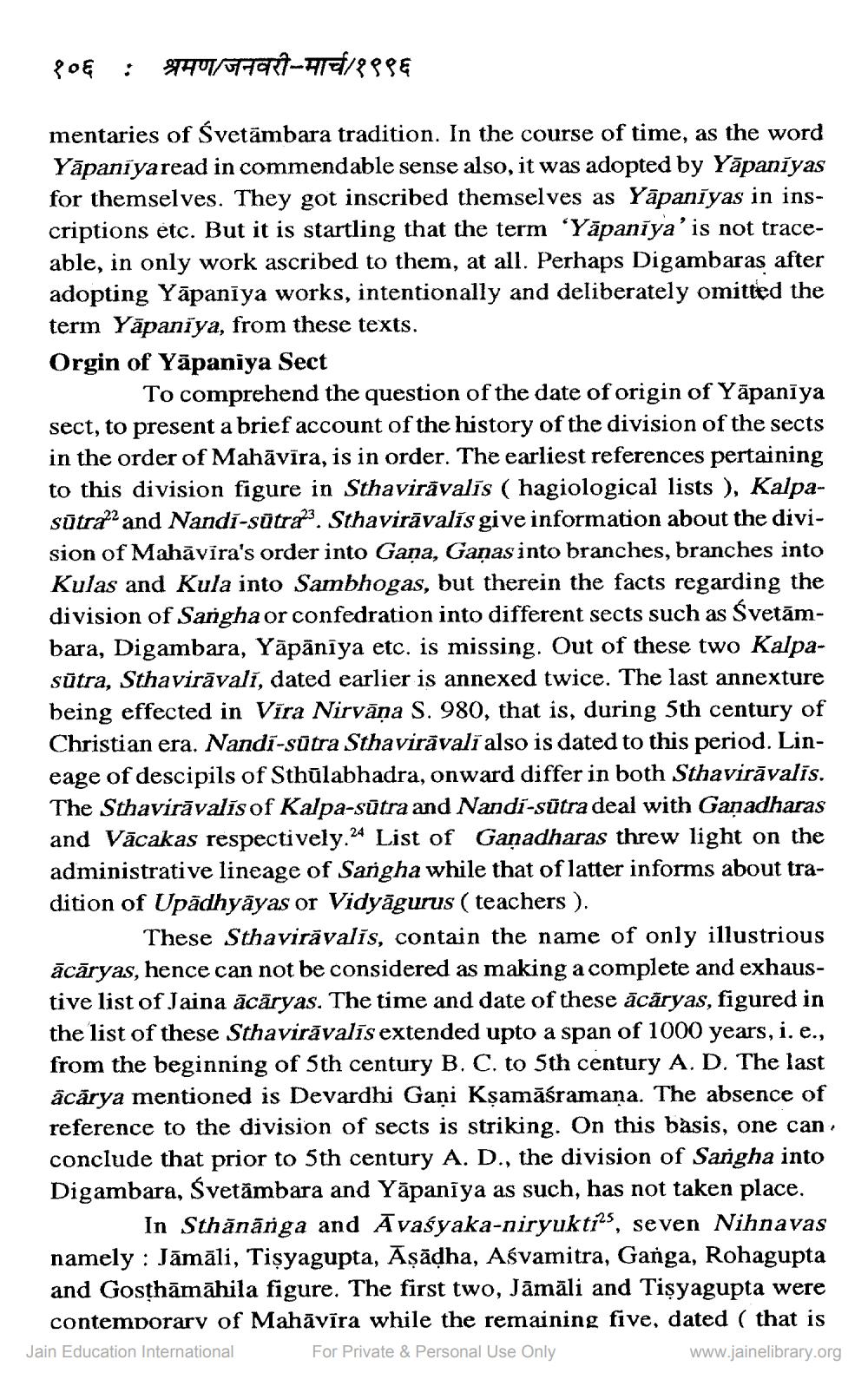________________
80€ :
4077047pt-Href/288€
mentaries of Śvetāmbara tradition. In the course of time, as the word
Yāpaniyaread in commendable sense also, it was adopted by Yāpaniyas for themselves. They got inscribed themselves as Yāpanīyas in inscriptions etc. But it is startling that the term “Yāpaniya' is not traceable, in only work ascribed to them, at all. Perhaps Digambaras after adopting Yāpanīya works, intentionally and deliberately omitted the term Yăpaniya, from these texts. Orgin of Yāpaniya Sect
To comprehend the question of the date of origin of Yāpanīya sect, to present a brief account of the history of the division of the sects in the order of Mahāvīra, is in order. The earliest references pertaining to this division figure in Sthavirāvalis ( hagiological lists ), Kalpasūtrał and Nandi-sūtra. Sthavirāvalis give information about the division of Mahāvira's order into Gana, Gaņas into branches, branches into Kulas and Kula into Sambhogas, but therein the facts regarding the division of Sangha or confedration into different sects such as Svetāmbara, Digambara, Yāpāniya etc. is missing. Out of these two Kalpasūtra, Sthavirāvali, dated earlier is annexed twice. The last annexture being effected in Vira Nirvāna S. 980, that is, during 5th century of Christian era. Nandi-sūtra Sthavirāvali also is dated to this s period. Lineage of descipils of Sthūlabhadra, onward differ in both Sthavirāvalis. The Sthavirāvalis of Kalpa-sūtra and Nandi-sūtra deal with Ganadharas and Vācakas respectively.24 List of Ganadharas threw light on the administrative lineage of Sangha while that of latter informs about tradition of Upadhyāyas or Vidyāgurus ( teachers ).
These Sthavirăvalis, contain the name of only illustrious ācāryas, hence can not be considered as making a complete and exhaustive list of Jaina ācāryas. The time and date of these ācāryas, figured in the list of these Sthavirāvalis extended upto a span of 1000 years, i. e., from the beginning of 5th century B. C. to 5th century A. D. The last ācārya mentioned is Devardhi Gani Kșamāśramana. The absence of reference to the division of sects is striking. On this bàsis, one can conclude that prior to 5th century A. D., the division of Sangha into Digambara, Svetămbara and Yāpanīya as such, has not taken place.
In Sthănānga and Avaśyaka-niryuktas, seven Nihnavas namely: Jāmāli, Tișyagupta, Āsādha, Aśvamitra, Ganga, Rohagupta and Gosthāmāhila figure. The first two, Jāmāli and Tişyagupta were
contemporary of Mahāvīra while the remaining five, dated ( that is Jain Education International For Private & Personal Use Only
www.jainelibrary.org




